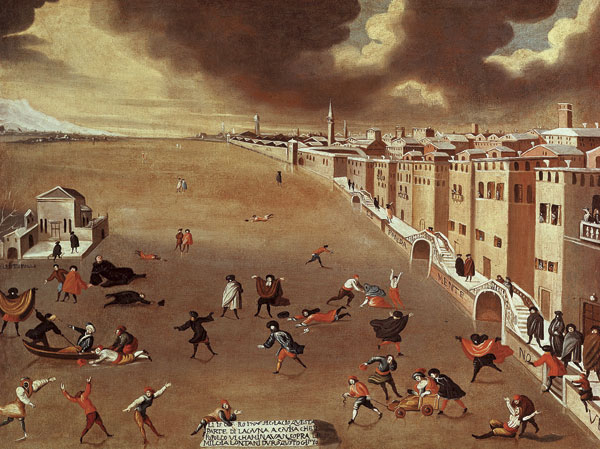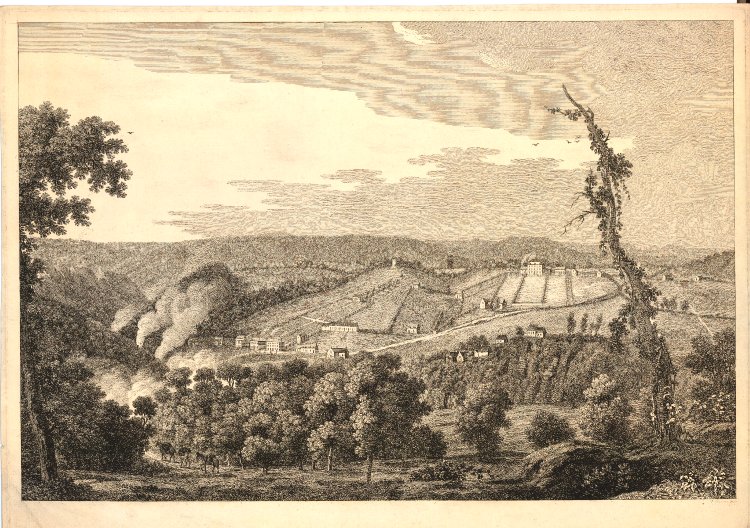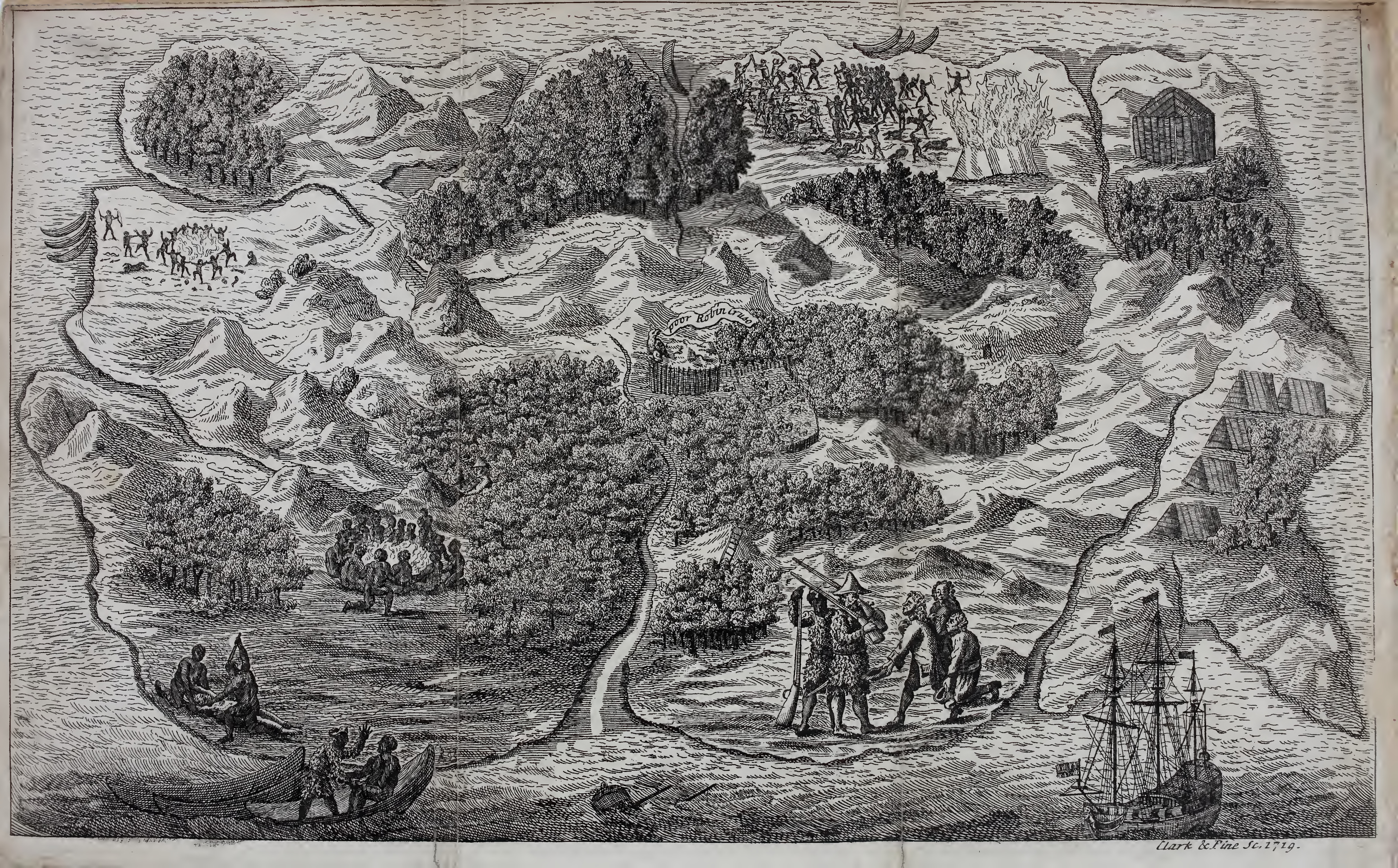|
1709
In the Swedish calendar it was a common year starting on Friday, one day ahead of the Julian and ten days behind the Gregorian calendar. Events January–March * January 1 – Battle of St. John's: The French capture St. John's, the capital of the British colony of Newfoundland. * January 6 – Western Europe's Great Frost of 1709, the coldest period in 500 years, begins during the night, lasting three months, with its effects felt for the entire year.Pain, Stephanie.1709: The year that Europe froze" ''New Scientist'', 7 February 2009. In France, the Atlantic coast and Seine River freeze, crops fail, and 24,000 Parisians die. Floating ice enters the North Sea. * January 10 – Abraham Darby I successfully produces cast iron using coke fuel at his Coalbrookdale blast furnace in Shropshire, England. * February 1 or 2 – During his first voyage, Captain Woodes Rogers encounters marooned privateer Alexander Selkirk, and rescues him after four years li ... [...More Info...] [...Related Items...] OR: [Wikipedia] [Google] [Baidu] |
Great Frost Of 1709
The Great Frost, as it was known in England, or ' ("The Great Winter"), as it was known in France, was an extraordinarily cold winter in Europe in 1708–1709,. and was the coldest European winter during the past 500 years. Notability William Derham recorded in Upminster, Great Britain, near London, a low of on the night of 5 January 1709, the lowest he had ever measured since he started taking readings in 1697. His contemporaries in the weather observation field in Europe likewise recorded lows down to . Derham wrote in '' Philosophical Transactions'': "I believe the Frost was greater (if not more universal also) than any other within the Memory of Man." During the Great Northern War, the Swedish invasion of Russia was notably weakened by the severe winter. Sudden winter storms and frosts killed thousands during the Swedish army's winter offensives, most notably during a single night away from camp that killed at least 2,000. Because the Russian troops were more prepared for ... [...More Info...] [...Related Items...] OR: [Wikipedia] [Google] [Baidu] |
Daniel Defoe
Daniel Defoe (; born Daniel Foe; – 24 April 1731) was an English writer, trader, journalist, pamphleteer and spy. He is most famous for his novel ''Robinson Crusoe'', published in 1719, which is claimed to be second only to the Bible in its number of translations. He has been seen as one of the earliest proponents of the English novel, and helped to popularise the form in Britain with others such as Aphra Behn and Samuel Richardson. Defoe wrote many political tracts, was often in trouble with the authorities, and spent a period in prison. Intellectuals and political leaders paid attention to his fresh ideas and sometimes consulted him. Defoe was a prolific and versatile writer, producing more than three hundred works—books, pamphlets, and journals — on diverse topics, including politics, crime, religion, marriage, psychology, and the supernatural. He was also a pioneer of business journalism and economic journalism. Early life Daniel Foe (his original name) was probabl ... [...More Info...] [...Related Items...] OR: [Wikipedia] [Google] [Baidu] |
Shōgun
, officially , was the title of the military dictators of Japan during most of the period spanning from 1185 to 1868. Nominally appointed by the Emperor, shoguns were usually the de facto rulers of the country, though during part of the Kamakura period, shoguns were themselves figureheads, with real power in hands of the Shikken of the Hōjō clan. The office of shogun was in practice hereditary, though over the course of the history of Japan several different clans held the position. The title was originally held by military commanders during Heian period in the eighth and ninth centuries. When Minamoto no Yoritomo gained political ascendency over Japan in 1185, the title was revived to regularize his position, making him the first shogun in the usually understood sense. The shogun's officials were collectively referred to as the ; they were the ones who carried out the actual duties of administration, while the Imperial court retained only nominal authority.Beasley, William G ... [...More Info...] [...Related Items...] OR: [Wikipedia] [Google] [Baidu] |
Tokugawa Ienobu
(June 11, 1662 – November 12, 1712) was the sixth ''shōgun'' of the Tokugawa dynasty of Japan. He was the eldest son of Tokugawa Tsunashige, thus making him the nephew of Tokugawa Ietsuna and Tokugawa Tsunayoshi, the grandson of Tokugawa Iemitsu, the great-grandson of Tokugawa Hidetada, and the great-great-grandson of Tokugawa Ieyasu. All of Ienobu's children died young. Early life (1662–1694) Tokugawa Ienobu was born as the oldest son of Tokugawa Tsunashige, ''daimyō'' of Kōfu, in 1662. His mother was a concubine. Tsunashige was the middle brother of Tokugawa Ietsuna and Tokugawa Tsunayoshi and the second son of Tokugawa Iemitsu with his concubine, thus making Ienobu their nephew. In 1662, Ienobu's uncle, Ietsuna was ''shōgun'', and his father, Tsunashige, was ''daimyō'' of Kōfu, a very valuable piece of land to the Tokugawa. Before becoming ''shōgun'' his name was Tokugawa Tsunatoyo, the 4th ''daimyō'' of Kōfu Domain from the Tokugawa clan. His childhood name was ... [...More Info...] [...Related Items...] OR: [Wikipedia] [Google] [Baidu] |
Abraham Darby I
Abraham Darby, in his later life called Abraham Darby the Elder, now sometimes known for convenience as Abraham Darby I (14 April 1677 – 5 May 1717, the first and best known of several men of that name), was an English ironmaster and foundryman. Born into an English Quaker family that played an important role in the Industrial Revolution, Darby developed a method of producing pig iron in a blast furnace fuelled by coke rather than charcoal. This was a major step forward in the production of iron as a raw material for the Industrial Revolution. Early life Abraham Darby was the son of John Darby, a yeoman farmer and locksmith by trade, and his wife Ann Baylies. He was born at Wren's Nest in Woodsetton, Staffordshire, now part of Dudley, West Midlands. He was descended from nobility; his great-grandmother Jane was an illegitimate child of Edward Sutton, 5th Baron Dudley. Abraham's great-grandmother was a sister of the whole blood to Dud Dudley, who claimed to have smelted i ... [...More Info...] [...Related Items...] OR: [Wikipedia] [Google] [Baidu] |
Alexander Selkirk
Alexander Selkirk (167613 December 1721) was a Scottish privateer and Royal Navy officer who spent four years and four months as a castaway (1704–1709) after being marooned by his captain, initially at his request, on an uninhabited island in the South Pacific Ocean. He survived that ordeal but died from tropical illness years later while serving as a Lieutenant aboard off West Africa. Selkirk was an unruly youth and joined buccaneering voyages to the South Pacific during the War of the Spanish Succession. One such expedition was on ''Cinque Ports'', captained by Thomas Stradling under the overall command of William Dampier. Stradling's ship stopped to resupply at the uninhabited Juan Fernández Islands, west of South America, and Selkirk judged correctly that the craft was unseaworthy and asked to be left there. Selkirk's suspicions were soon justified, as ''Cinque Ports'' foundered near Malpelo Island 400 km (250 mi) from the coast of what is now Colombia. By ... [...More Info...] [...Related Items...] OR: [Wikipedia] [Google] [Baidu] |
Woodes Rogers
Woodes Rogers ( 1679 – 15 July 1732) was an English sea captain, privateer, Atlantic slave trade, slave trader and, from 1718, the first List of colonial heads of the Bahamas, Royal Governor of the Bahamas. He is known as the captain of the vessel that rescued Marooning, marooned Alexander Selkirk, whose plight is generally believed to have inspired Daniel Defoe's ''Robinson Crusoe''. Rogers came from an experienced seafaring family, grew up in Poole and Bristol, and served a marine apprenticeship to a Bristol sea captain. His father held shares in many ships, but he died when Rogers was in his mid-twenties, leaving Rogers in control of the family shipping business. In 1707, Rogers was approached by Captain William Dampier, who sought support for a privateering voyage against the Spanish, with whom the Kingdom of Great Britain, British were War of the Spanish Succession, at war. Rogers led the expedition, which consisted of two well-armed ships, ''Duke'' and ''Duchess'', ... [...More Info...] [...Related Items...] OR: [Wikipedia] [Google] [Baidu] |
Coalbrookdale
Coalbrookdale is a village in the Ironbridge Gorge in Shropshire, England, containing a settlement of great significance in the history of iron ore smelting. It lies within the civil parish called the Gorge. This is where iron ore was first smelted by Abraham Darby using easily mined "coking coal". The coal was drawn from drift mines in the sides of the valley. As it contained far fewer impurities than normal coal, the iron it produced was of a superior quality. Along with many other industrial developments that were going on in other parts of the country, this discovery was a major factor in the growing industrialisation of Britain, which was to become known as the Industrial Revolution. Today, Coalbrookdale is home to the Ironbridge Institute, a partnership between the University of Birmingham and the Ironbridge Gorge Museum Trust offering postgraduate and professional development courses in heritage. Before Abraham Darby Before the Dissolution of the Monasteries, Madeley ... [...More Info...] [...Related Items...] OR: [Wikipedia] [Google] [Baidu] |
Blast Furnace
A blast furnace is a type of metallurgical furnace used for smelting to produce industrial metals, generally pig iron, but also others such as lead or copper. ''Blast'' refers to the combustion air being "forced" or supplied above atmospheric pressure. In a blast furnace, fuel ( coke), ores, and flux (limestone) are continuously supplied through the top of the furnace, while a hot blast of air (sometimes with oxygen enrichment) is blown into the lower section of the furnace through a series of pipes called tuyeres, so that the chemical reactions take place throughout the furnace as the material falls downward. The end products are usually molten metal and slag phases tapped from the bottom, and waste gases (flue gas) exiting from the top of the furnace. The downward flow of the ore along with the flux in contact with an upflow of hot, carbon monoxide-rich combustion gases is a countercurrent exchange and chemical reaction process. In contrast, air furnaces (such as reverbera ... [...More Info...] [...Related Items...] OR: [Wikipedia] [Google] [Baidu] |
February 19
Events Pre-1600 * 197 – Emperor Septimius Severus defeats usurper Clodius Albinus in the Battle of Lugdunum, the bloodiest battle between Roman armies. * 356 – The anti-paganism policy of Constantius II forbids the worship of pagan idols in the Roman Empire. * 1594 – Having already been elected to the throne of the Polish–Lithuanian Commonwealth in 1587, Sigismund III of the House of Vasa is crowned King of Sweden, having succeeded his father John III of Sweden in 1592. *1600 – The Peruvian stratovolcano Huaynaputina explodes in the most violent eruption in the recorded history of South America. 1601–1900 *1649 – The Second Battle of Guararapes takes place, effectively ending Dutch colonization efforts in Brazil. *1674 – England and the Netherlands sign the Treaty of Westminster, ending the Third Anglo-Dutch War. A provision of the agreement transfers the Dutch colony of New Amsterdam to England. *1714 – Great Northern War: Th ... [...More Info...] [...Related Items...] OR: [Wikipedia] [Google] [Baidu] |
Guayaquil
, motto = Por Guayaquil Independiente en, For Independent Guayaquil , image_map = , map_caption = , pushpin_map = Ecuador#South America , pushpin_relief = 1 , pushpin_map_caption = , pushpin_mapsize = , coordinates = , subdivision_type = Country , subdivision_name = Ecuador , subdivision_type1 = Province , subdivision_name1 = Guayas , subdivision_type2 = Canton , subdivision_name2 = Guayaquil , established_title = Spanish foundation , established_date = , founder = Francisco de Orellana , named_for = Guayas and Quil , established_title2 = Independence , established_date2 = , parts_type = Urban ... [...More Info...] [...Related Items...] OR: [Wikipedia] [Google] [Baidu] |
Robinson Crusoe
''Robinson Crusoe'' () is a novel by Daniel Defoe, first published on 25 April 1719. The first edition credited the work's protagonist Robinson Crusoe as its author, leading many readers to believe he was a real person and the book a travelogue of true incidents. Epistolary, confessional, and didactic in form, the book is presented as an autobiography of the title character (whose birth name is Robinson Kreutznaer) – a castaway who spends 28 years on a remote tropical desert island near the coasts of Venezuela and Trinidad, roughly resembling Tobago, encountering cannibals, captives, and mutineers before being rescued. The story has been thought to be based on the life of Alexander Selkirk, a Scottish castaway who lived for four years on a Pacific island called "Más a Tierra" (now part of Chile) which was renamed Robinson Crusoe Island in 1966. Despite its simple narrative style, ''Robinson Crusoe'' was well received in the literary world and is often credited as ma ... [...More Info...] [...Related Items...] OR: [Wikipedia] [Google] [Baidu] |


.jpg)







